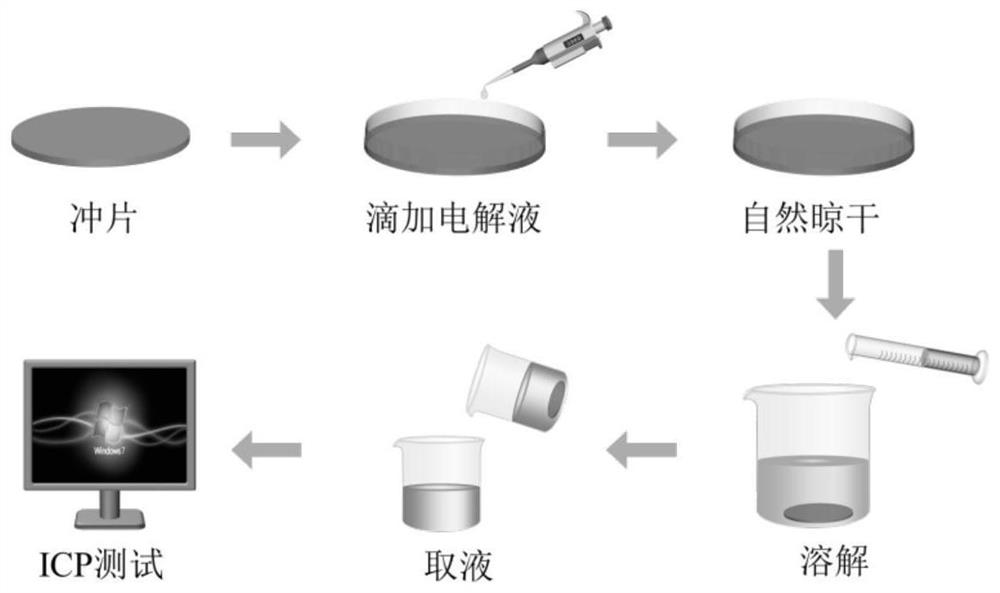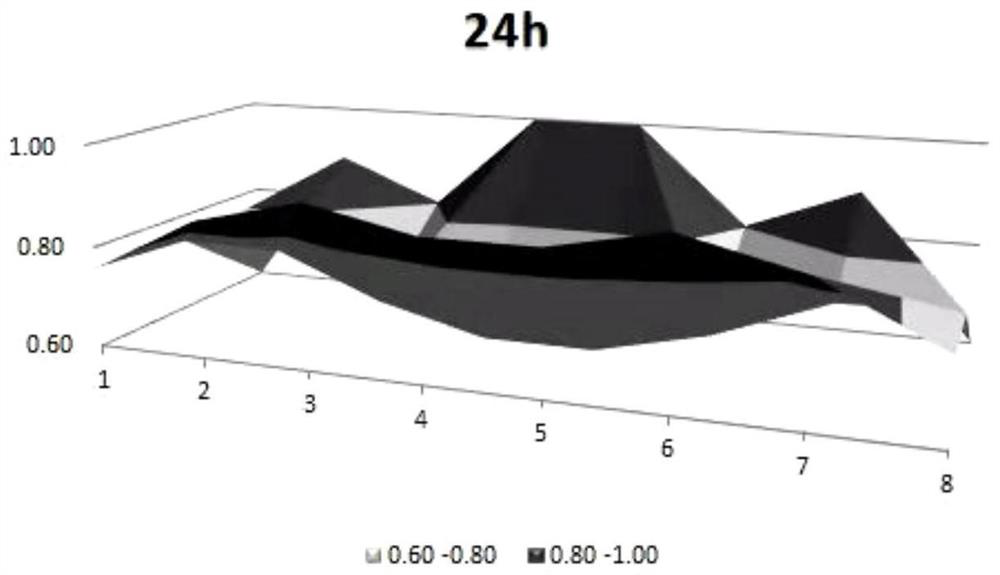Detection method for quantitatively detecting electrolyte distribution in battery and application
A detection method and quantitative detection technology, applied in the direction of material analysis, measuring devices, and analysis materials through electromagnetic means, can solve the problems of cumbersome operation, high test cost, and high price, and achieve simple operation, reliable data results, and optimized The effect of the production process
- Summary
- Abstract
- Description
- Claims
- Application Information
AI Technical Summary
Problems solved by technology
Method used
Image
Examples
Embodiment 1
[0046] This embodiment provides a detection method for quantitatively detecting the distribution of electrolyte inside the battery. The test method adopts electrochemical impedance test and ICP test, and mainly includes three parts:
[0047] The first part: ICP quantitative detection verification (the purpose of the first part is to verify whether the ICP test can accurately evaluate the LiPF in the cell 6 Electrolyte solution content, all contents contained in the first part all do not belong to the protection scope and disclosure scope of the present invention, only as the preliminary work of the technical scheme limited by the present invention) such as figure 1 mentioned, including:
[0048] (1) Prepare some positive pole pieces and negative pole pieces, and use a punching machine to punch out several circular sample pieces with a diameter of 12mm in the glove box for subsequent use;
[0049] (2) Take 5 positive electrode samples and 5 negative electrode samples respectiv...
Embodiment 2
[0066] This embodiment provides a detection method for quantitatively detecting the distribution of electrolyte inside the battery. The test method adopts voltage test and ICP test, and mainly includes three parts:
[0067]The first part in this embodiment is exactly the same as the first part in Example 1, and the main purpose is to verify whether the ICP test can be used for the test of electrolyte content;
PUM
| Property | Measurement | Unit |
|---|---|---|
| diameter | aaaaa | aaaaa |
Abstract
Description
Claims
Application Information
 Login to View More
Login to View More - R&D
- Intellectual Property
- Life Sciences
- Materials
- Tech Scout
- Unparalleled Data Quality
- Higher Quality Content
- 60% Fewer Hallucinations
Browse by: Latest US Patents, China's latest patents, Technical Efficacy Thesaurus, Application Domain, Technology Topic, Popular Technical Reports.
© 2025 PatSnap. All rights reserved.Legal|Privacy policy|Modern Slavery Act Transparency Statement|Sitemap|About US| Contact US: help@patsnap.com



